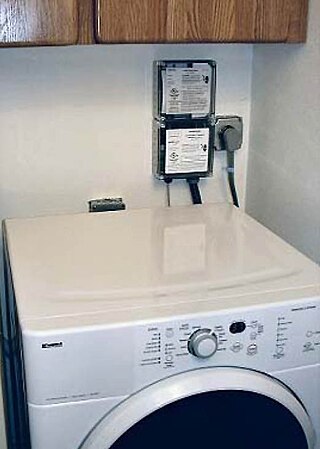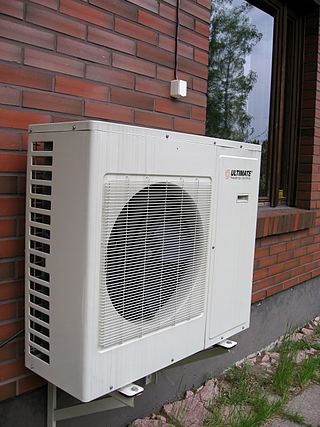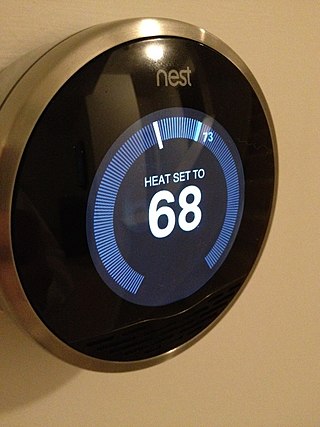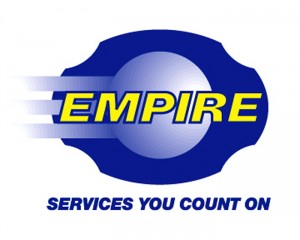Related Research Articles

Energy conservation is the effort to reduce wasteful energy consumption by using fewer energy services. This can be done by using energy more effectively or changing one's behavior to use less and better source of service. Energy conservation can be achieved through efficient energy use, which has some advantages, including a reduction in greenhouse gas emissions and a smaller carbon footprint, as well as cost, water, and energy savings.

Demand response is a change in the power consumption of an electric utility customer to better match the demand for power with the supply. Until the 21st century decrease in the cost of pumped storage and batteries, electric energy could not be easily stored, so utilities have traditionally matched demand and supply by throttling the production rate of their power plants, taking generating units on or off line, or importing power from other utilities. There are limits to what can be achieved on the supply side, because some generating units can take a long time to come up to full power, some units may be very expensive to operate, and demand can at times be greater than the capacity of all the available power plants put together. Demand response, a type of energy demand management, seeks to adjust in real-time the demand for power instead of adjusting the supply.

Negawatt power is investing to reduce electricity consumption rather than increasing supply capacity. In this way, investing in negawatts can be considered as an alternative to a new power station and the costs and environmental concerns can be compared.

A Zero-Energy Building (ZEB), also known as a Net Zero-Energy (NZE) building, is a building with net zero energy consumption, meaning the total amount of energy used by the building on an annual basis is equal to the amount of renewable energy created on the site or in other definitions by renewable energy sources offsite, using technology such as heat pumps, high efficiency windows and insulation, and solar panels.

An energy audit is an inspection survey and an analysis of energy flows for energy conservation in a building. It may include a process or system to reduce the amount of energy input into the system without negatively affecting the output. In commercial and industrial real estate, an energy audit is the first step in identifying opportunities to reduce energy expense and carbon footprint.
An energy service company (ESCO) is a company that provides a broad range of energy solutions including designs and implementation of energy savings projects, retrofitting, energy conservation, energy infrastructure outsourcing, power generation, energy supply, and risk management.

Vermont Energy Investment Corporation or VEIC is a non-profit organization in Chittenden County, Vermont that seeks to reduce the economic and environmental costs of energy consumption through energy efficiency and renewable energy adoption. Since its founding in 1986, the organization has been involved in designing energy efficiency and renewable energy programs in North America and worldwide.

The United States Department of Energy's State Energy Program (SEP) provides grants to states and directs funding to state energy offices from technology programs in Office of Energy Efficiency and Renewable Energy. States use grants to address their energy priorities and program funding to adopt emerging renewable energy and energy efficiency technologies. Started in 2010, the program "is the only program administered by the U.S. Department of Energy (DOE) that provides cost-shared resources directly to the states for allocation by the governor-designated State Energy Office for use in energy efficiency and clean energy innovation, development, and demonstration activities.”
Energy Management Software (EMS) is a general term and category referring to a variety of energy-related software applications, which provide energy management including utility bill tracking, real-time energy metering, consumption control, generation control, building simulation and modeling, carbon and sustainability reporting, IT equipment management, grid services, and/or energy audits. Managing energy can require a system of systems approach.

The United States is the second-largest single consumer of energy in the world. The U.S. Department of Energy categorizes national energy use in four broad sectors: transportation, residential, commercial, and industrial. Energy usage in transportation and residential sectors is largely controlled by individual domestic consumers. Commercial and industrial energy expenditures are determined by businesses entities and other facility managers. National energy policy has a significant effect on energy usage across all four sectors.
Premium efficiency, when used in reference to specific types of Electric Motors, is a class of motor efficiency.

PECI is a private, non-profit American company based in Portland, Oregon with additional offices in Santa Ana, California and San Francisco, California. PECI designs and manages energy efficiency programs for utility providers, government organizations, and other clients. Some of the organizations PECI has worked with include the U.S. Department of Energy, Avista, Wal-mart, Southern California Edison, the Community Energy Project, Energy Trust of Oregon, Pacific Gas & Electric and the San Diego Natural History Museum.
A Deep Energy Retrofit is an energy conservation project in an existing building that leads to an overall improvement in building performance. While there is no exact definition for a deep energy retrofit, it can be characterized as a whole-building analysis and construction process that aims to reduce on-site energy use by 50% or more using existing technologies, materials and construction practices. Reductions are calculated against baseline energy use using data from utility bills. Such a retrofit reaps multifold benefits beyond energy cost savings, unlike conventional energy retrofit. It may also involve remodeling the building to achieve a harmony in energy, indoor air quality, durability, and thermal comfort. An integrated project delivery method is recommended for a deep energy retrofit project. An over-time approach in a deep energy retrofitting project provides a solution to the large upfront costs problem in all-at-once execution of the project.

Smart thermostats are Wi-Fi thermostats that can be used with home automation and are responsible for controlling a home's heating, ventilation, and air conditioning. They perform similar functions as a programmable thermostat as they allow the user to control the temperature of their home throughout the day using a schedule, but also contain additional features, such as Wi-Fi connectivity, that improve upon the issues with programming.

The Empire District Electric Company is an investor-owned utility providing electric, natural gas, and water service with approximately 215,000 customers in Missouri, Kansas, Oklahoma, and Arkansas. A subsidiary of the company also provides fiber optic services.

Sustainable refurbishment describes working on existing buildings to improve their environmental performance using sustainable methods and materials. A refurbishment or retrofit is defined as: "any work to a building over and above maintenance to change its capacity, function or performance' in other words, any intervention to adjust, reuse, or upgrade a building to suit new conditions or requirements". Refurbishment can be done to a part of a building, an entire building, or a campus. Sustainable refurbishment takes this a step further to modify the existing building to perform better in terms of its environmental impact and its occupants' environment.

Solar power in Florida has been increasing, as the cost of solar power systems using photovoltaics (PV) has decreased in recent years. Florida has low electricity costs compared with other states, which makes individual solar investment less attractive. Florida ranks ninth nationally in solar resource strength according to the National Renewable Energy Laboratory and tenth in solar generation by the Solar Energy Industries Association.
Energy Trust of Oregon is an independent nonprofit organization based in Portland, Oregon, United States, offering services and cash incentives to customers of Portland General Electric, Pacific Power, NW Natural, Cascade Natural Gas, and Avista in Oregon. It also serves customers of NW Natural in Washington.

Home energy upgrades from public utilities are added home energy efficiency and renewable energy features planned or installed by public utilities. Help from a public utility can make it easier for a homeowner to select, install or operate climate-friendly components. The utility might assist with coordinated use of utility-supplied energy, building features, financing, operating options and neighborhood supplied energy.
Energy efficiency, or efficient energy use, describes an optimization of the power requirements and environmental impacts of energy systems. This includes actions taken by a governing body to decrease power use over an entire power grid, or actions taken by individuals to make their energy use in their house less wasteful. It is also one of the easiest and most cost effective ways to fight climate change and air pollution.
References
- ↑ "EPA Report to Congress on Server and Data Center Energy Efficiency, August 3, 2007" (PDF).
- 1 2 "Energy: Building the smart grid, June 4, 2009". The Economist. June 4, 2009.
- ↑ "VFS Energy Credit Incentive Program - Participating Utilities Link". Verari Systems. Archived from the original on December 28, 2008. Retrieved 2009-03-08.
- ↑ "Non Residential New Construction: Resources for Energy-Efficient Non Residential New Construction". Pacific Gas and Electric Company. Retrieved 2009-07-20.
- ↑ GreenOhm official website
- ↑ "Non Residential New Construction (NRNC)". Pacific Gas and Electric Company. Retrieved 2009-07-23.
- ↑ "Rebates for Small Business and Existing Facilities". Pacific Gas and Electric Company. Retrieved 2009-07-23.
- ↑ "Non Residential New Construction (NRNC)". Pacific Gas and Electric Company. Retrieved 2009-07-30.
- ↑ "Non Residential Retrofit (NRR)". Pacific Gas and Electric Company. Retrieved 2009-07-30.
- ↑ "Energy Savings Bid Program, 2009" (PDF).[ permanent dead link ]